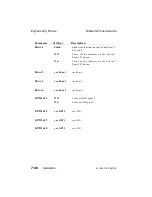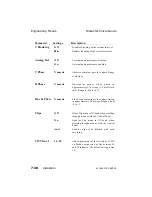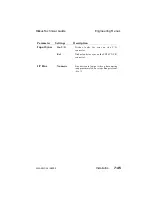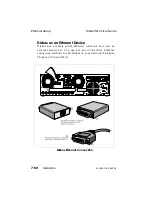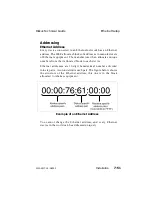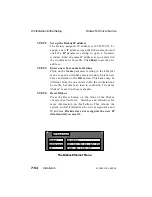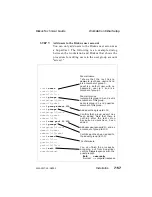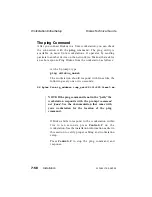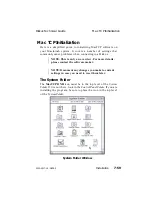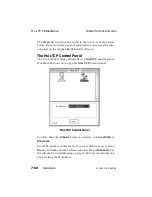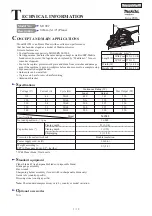
Ethernet Setup
Overview
Ethernet is a Local Area Network (LAN) standard originally
developed at Xerox Palo Alto Research Center.
Ethernet, as supported by Diskus, interconnects a group of
computers known as hosts or nodes. Data passes serially between
devices on the network in the form of packets. Each packet carries
addressing information to show its source and destination.
All the devices on a network share a single cable, or hub. There
are rules to prevent two devices from transmitting at the same
time.
You can think of Diskus as a server that lets the rendering engines
and computers in a graphics lab transfer animation sequences or
rendered images. In addition, there are no preroll problems like
those associated with single frame edits using a VTR.
The remote control provided across Ethernet is human readable.
Using a workstation or PC, you can set up and control Diskus,
then preview frames or play animations from anywhere on the
network without the need for multiple control panels.
As an Ethernet device, Diskus appears as just another node. You
can transfer files to it in the same way you move them from one
computer system to another. The rcp and FTP commands
eliminate the need for a separate VTR controller or special
software.
Each device requires a transceiver to convert from the network
cable to the device’s sub-D connector. (Some devices have
internal transceivers and so have coaxial, or modular, connectors
instead of, or as well as, the sub-D connector.)
Ethernet Setup
Diskus Technical Guide
7-46
Installation
9100-0217-02 - SEP 95
Summary of Contents for Diskus
Page 1: ...Diskus Digital Disk Recorder Manual ...
Page 477: ...NOTES Diskus Operations Index 9100 0217 02 SEP 95 Index xvii ...
Page 478: ...NOTES Index Diskus Operations xviii Index 9100 0217 02 SEP 95 ...
Page 479: ...NOTES Diskus Operations Index 9100 0217 02 SEP 95 Index xix ...
Page 480: ...NOTES Index Diskus Operations xx Index 9100 0217 02 SEP 95 ...





